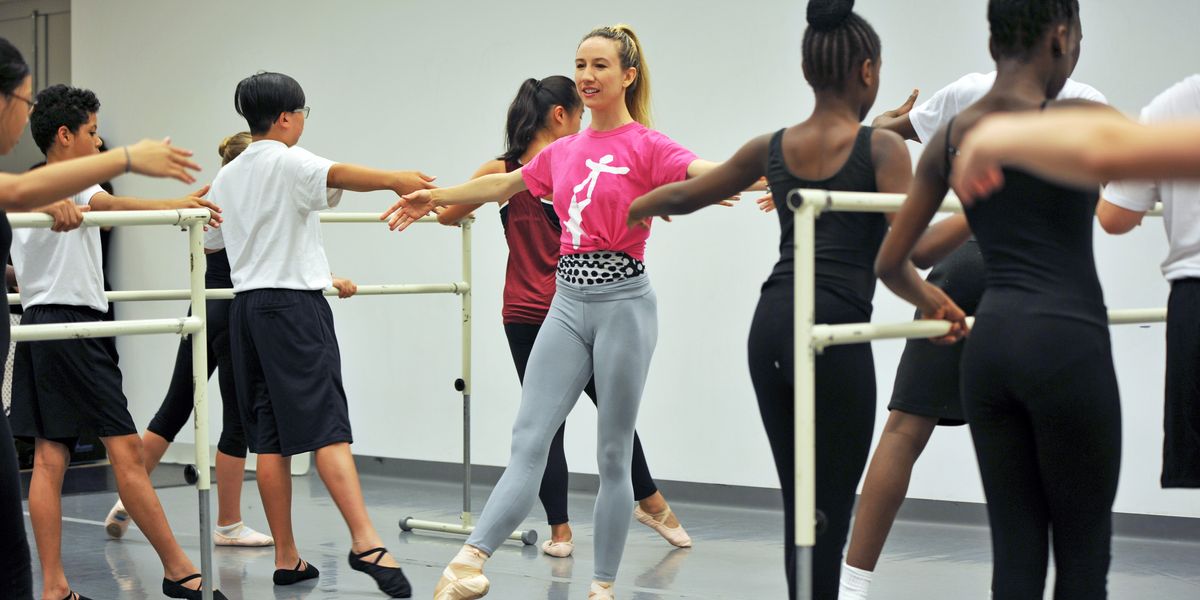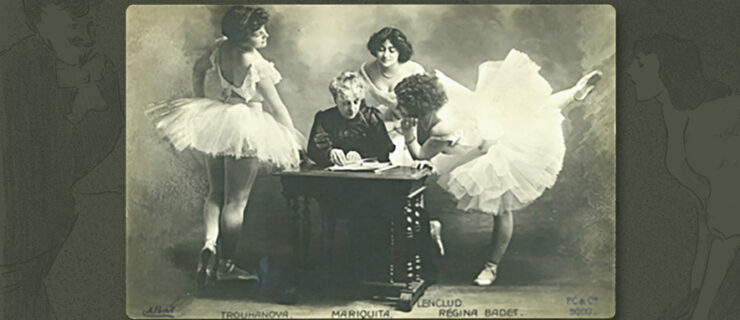5 Pieces of Advice We Learned From Isabella Boylston's Ballet Class at NDI
In the middle of preparing for performances at Colorado’s Vail Dance Festival and her own launch of Ballet Sun Valley, American Ballet Theatre principal Isabella Boylston took a break from rehearsing earlier this week to teach ballet during the National Dance Institute (NDI) summer intensive. Founded by former New York City Ballet principal Jacques d’Amboise in 1976, NDI provides a free arts education to children across NYC, many of whom are from low-income communities. “NDI really resonated with me because I didn’t come from a wealthy family, and so scholarships were really instrumental in helping me get to where I am,” Boylston told us on why she wanted to get involved. “I love the fact that it’s free dance classes for kids, and that a dance education really helps you in whatever you pursue.”
We got to sit in on class with Boylston, who taught beginner ballet students at NDI’s Harlem Center, and we picked up a few important lessons every young dancer can use:
Build on the Basics:
Before traveling across the floor with waltz turns, Boylston had her dancers begin the combination with simple balancés side-to-side. “Once you get the rhythm, you can start traveling with it and changing the arms. Start by brushing the leg out,” she explained. Then think of it as brush, walk, walk—traveling on the brush and keeping the walks on demi-pointe underneath you.”
Chaînés Are All About Coordination:
Having trouble getting the hang of chaînés turns? You’re in good company. Boylston told us that growing up, she struggled with turns, too—and she made sure to spend extra time breaking down chaînés to her students. “Think about spotting every time so your coordination is working with you. Each little step that you do is a half turn, and each time you flip around, your head flips really quickly, too,” she said. While Boylston prefers to spot the front during her turns, she advised her students to start by spotting the side since that’s the direction they’re traveling in. “Once you get that coordination going slowly, it will be really easy to do fast chaînés, which look really exciting.”
Practice Helps Take Away Some of the Pressure:
Formerly the youngest principal at ABT, Boylston told the students that she definitely felt the pressure. “My biggest obstacle was battling my own self-doubt. When I first joined ABT, they gave me some really hard roles like the jump girl in Swan Lake‘s Pas de Trois and Theme and Variations, which are really technical,” she said. To combat her nerves, Boylston worked even harder. “I think it’s experience, too—there’s no substitute for experience. The more time I’m out on stage, the more at home I feel.”
It’s Okay to Fall:
“I think it’s good if you fall because it means you’re really going for it,” Boylston told the students after one of them fell before quickly getting up. Recalling her own “epic” fall at the Kennedy Center during her debut in La Bayadère, Boylston assured her students that it happens to everyone. “Everything had been going really well, and then there was some kind of mind-body disconnect at the end of the act when I was pulling in during a fouetté turn—and I fell. I’m center stage, spotlight on me, and I’m lying there with my feet over my head. The whole audience gasped, but I picked myself up, took a couple breaths and kept going.”
Even The Pros Need Help Sometimes:
During a center combination of tendus, glissades and pirouettes from fifth, Boylston decided to challenge the kids by having them reverse the whole thing. Challenging herself, too, Boylston mixed up the direction of the glissades, and d’Amboise stepped in to solve the tricky reverse combo!
At the students’ request, Boylston showed them a bit of Swan Lake, which she called “the hardest ballet.”





